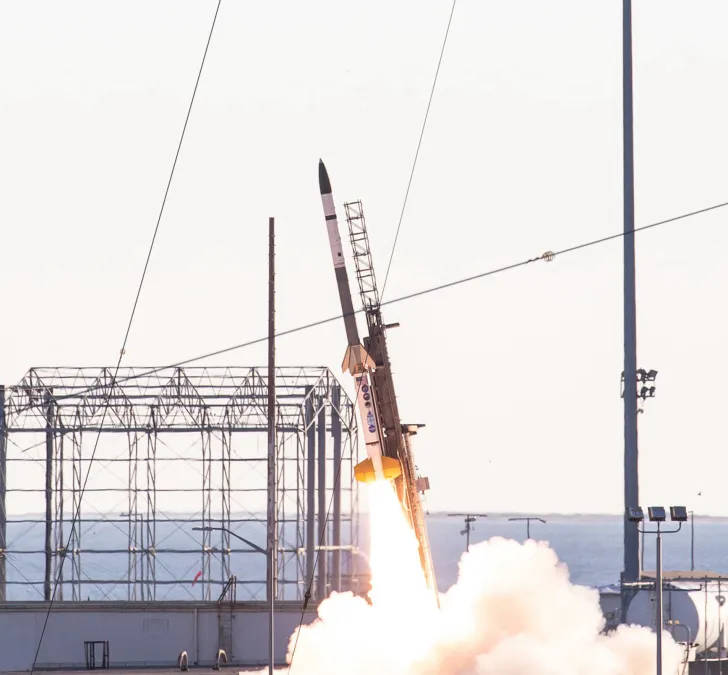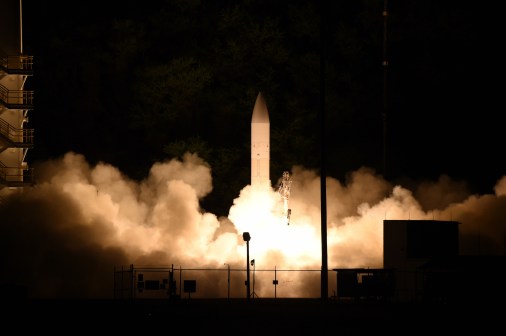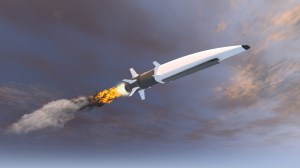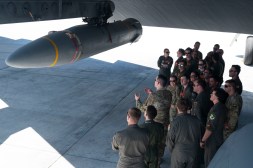Navy seeks $900M for hypersonics R&D, plans to buy 8 Conventional Prompt Strike missiles in 2024

The Navy is asking lawmakers for $901 million in fiscal 2024 for research, development, test and evaluation work for its Conventional Prompt Strike program, as it pursues plans to integrate hypersonic missiles into destroyers and submarines.
The sea service is also looking to buy eight “all-up rounds” and associated canisters for CPS weapons in 2024, marking the first procurement of the missiles. The Navy intends to procure a total of 64 rounds in fiscal 2024-2028, according to budget documents released Monday.
Hypersonic weapons are a high priority for the Department of Defense writ large as it tries to catch up with China and Russia in this area. These types of missiles are designed to fly faster than Mach 5 and be highly maneuverable against enemy air defenses.
“The CPS weapon system will deliver a hypersonic conventional offensive strike capability through a depressed boost-glide trajectory to prosecute deep-inland, time-critical, soft and medium-hardened targets in contested environments,” according to Navy budget documents.
The service is partnering with the Army on a common hypersonic glide body (CHGB) that consists of a 34.5-inch two-stage booster and a thermal protection system.
“The Navy will design, develop, and produce the missile booster, as well as integrate the missile booster with the CHGB. Each service will use the common hypersonic missile while developing individual weapon control systems and launchers tailored for launch from sea or land,” per the budget documents.
The Navy plans to begin deploying the capability on stealthy Zumwalt-class destroyers in fiscal 2025 and on Virginia-class submarines in fiscal 2028. Some weapon systems are slated to be removed from the destroyers to allow for integration of CPS technology. Engineering efforts are also planned for fiscal 2024 to support future integration on Virginia-class Block V hulls, in-air launcher testing, construction of the underwater launch test facility and fabrication of specialty equipment to facilitate testing slated for fiscal 2025, according to budget documents.
In February, the service announced that Lockheed Martin had been awarded a $1.18 billion cost-plus-incentive-fee and cost-plus-fixed-fee contract modification, to provide program management, engineering development, systems integration, long lead material, and special tooling and equipment in support of CPS missile production. If all contract options are exercised, it would be worth up to $2.22 billion.
Lockheed is expected to provide launcher systems, weapon control, all-up rounds, and platform integration support, the contractor said in a press release.
The Pentagon has encountered challenges in testing hypersonics technology. Most recently, a missile flight test scheduled for March 5 had to be scrapped by the Navy and Army due to an issue associated with battery activation — not the missile itself.
During a press briefing on Monday during the fiscal 2024 budget rollout, Navy Undersecretary Erik Raven was asked about the service’s decision to request funding for CPS procurement given the current state of testing.
“On CPS, I think what you’re seeing here [in the budget request] is … an endorsement of the capability, again, very central to national pacing challenges [posed by China] in the Indo-Pacific. The point of testing is to learn things, but we have confidence that we’re going to be able to field the system as required. And we’ll work with our industrial partners to make sure that we stay on track,” Raven said.
At the annual SNA symposium in January, DefenseScoop asked Navy Secretary Carlos Del Toro if he was confident that hypersonic weapons will be ready to be deployed on Zumwalts and Virginia-class boats by the target dates.
“What I am confident of, is that I’m going to put as much resources and much attention, as much intellectual capacity in terms of my management team, and work … as closely with industry as we can to make that a priority and a reality. Now, if we have technical challenges that develop along the way, we’ll deal with those. But what I do know is that if we put the right talent, we put the right resources into it, hopefully, we will get there [on the Zumwalts] by 2025 or shortly afterwards. But this is a major priority for the Department of the Navy, and I am completely focused along with the CNO on making this happen,” he said.
Last week, Vice Adm. Johnny Wolfe, director of the Navy’s strategic systems programs, testified during a hearing of the House Armed Services Subcommittee on Strategic Forces, where he and other Pentagon officials provided an update on where things stand with the department’s hypersonics efforts.
“I remain confident that the CPS program will be ready to field the hypersonic weapon system upon the availability of the Navy platforms,” Wolfe told lawmakers.






